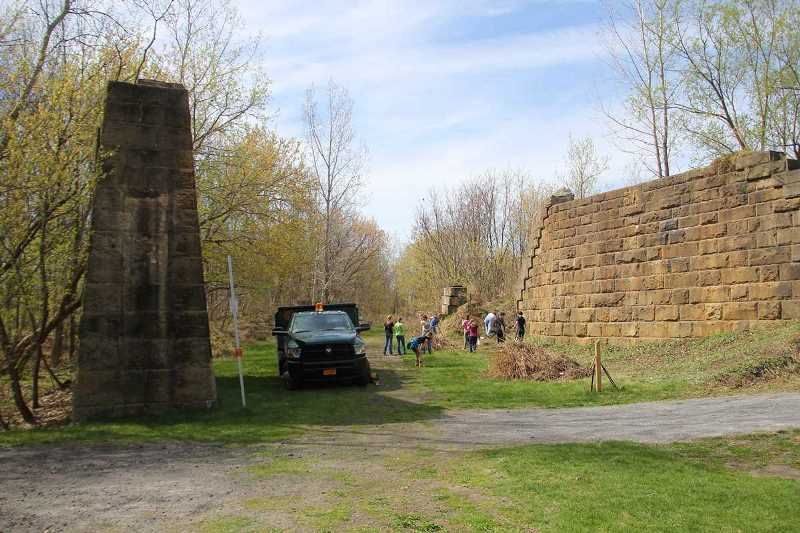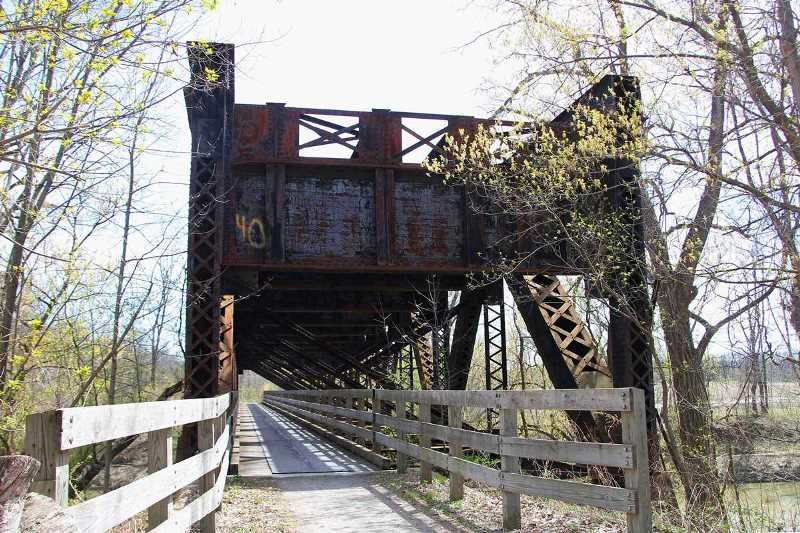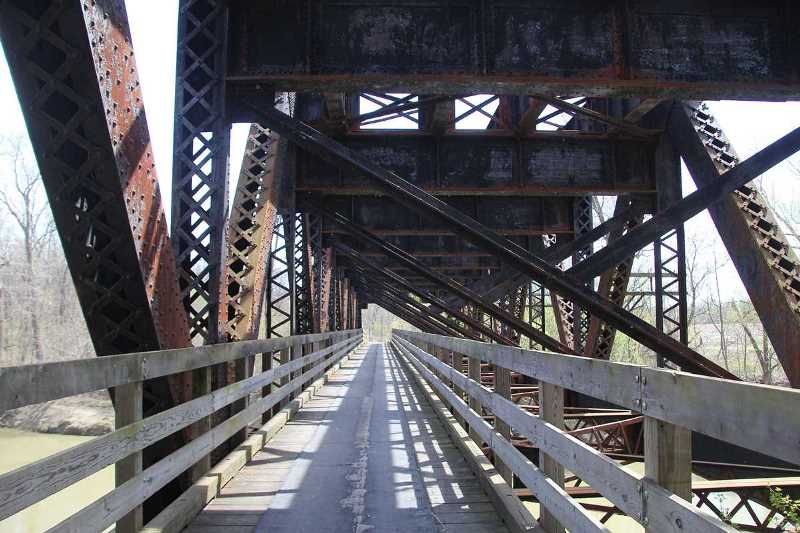I just got a good video "Lehigh Valley Memories"" Vol. 3 Sayre to Buffalo. An old 8 mm movie from the late 50's shows a train crossing the Genesee River or so says the narrator, the bridge shown is a simple deck affair but as we know the bridge today, part of a bike trail, has a superstructure, a rather strange looking one at that, not a normal truss bridge. Can anyone explain?
The bridge carried the double-track mainline over the Genesee River - and given the weight of locomotives at the time - it had to support that for the entire length of the main structure over the river itself. Likely over-engineered - but they didn't have to rebuild it 20 years later to carry heavier loads - or due to failure. That thing will probably be standing 100 years from now.
The trail runs under the actual tracks which ran on the top side of the structure. There were considerable approaches on either side of the actual structure over the river itself. There's an engineering drawing of it on display at the RGVRRM in Rush, NY. I have a picture of that somewhere...



